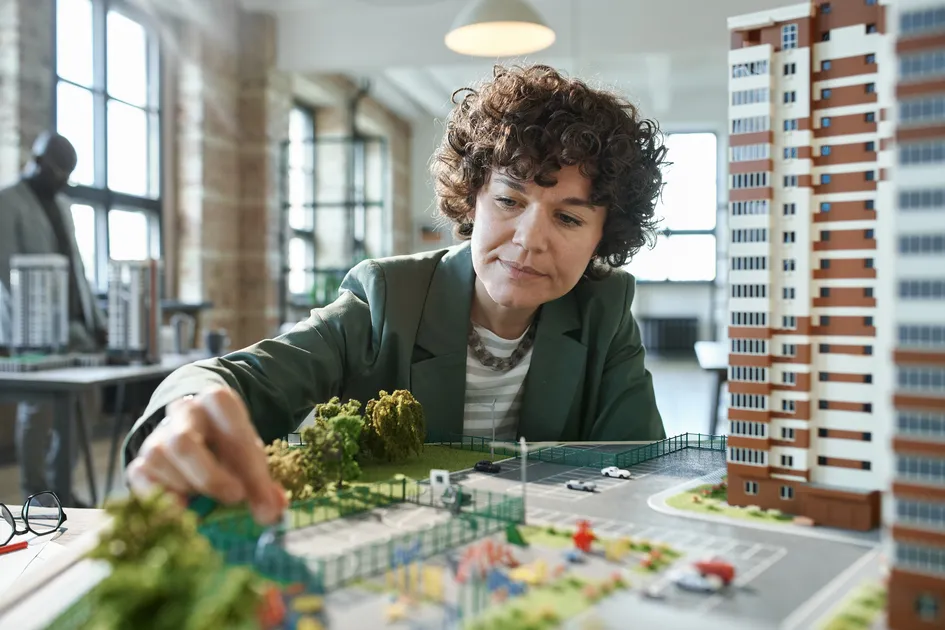
Sustainable City Planning. As cities continue to grow and evolve, so does the need for sustainable city planning. Sustainable city planning refers to cities’ conscious design and management to promote sustainability. This involves prioritizing the health of the environment, the economy, and the community. Here are the fundamental elements of sustainable city planning.
-
Green Infrastructure
One of the critical components of sustainable city planning is the incorporation of green infrastructure. This includes preserving and integrating natural landscapes into urban environments, such as parks, green roofs, and street trees, which provide environmental benefits, enhance aesthetics, and improve the quality of life for city residents.
-
Sustainable Transportation
Promoting sustainable modes of transportation, such as biking, walking, and public transit, is another essential part of sustainable city planning. These modes of transport reduce carbon emissions, traffic congestion, and reliance on fossil fuels.
-
Renewable Energy
As part of sustainable city planning, cities must strive to utilize renewable energy sources like solar and wind power. This reduces the city’s carbon footprint and contributes to the global effort against climate change.
-
Waste Management
Effective waste management strategies, such as recycling programs and composting, are crucial to a sustainable city. These strategies help reduce the amount of waste in landfills and promote a circular economy.
-
Water Conservation
Incorporating water-saving measures, like rainwater harvesting and greywater recycling systems, help conserve one of our most precious resources and ensure a sustainable water supply for the city.
-
Community Engagement
A sustainable city can only exist with the involvement of its residents. Encouraging community engagement and input in city planning processes fosters a sense of ownership among residents and ensures that the city meets its residents’ needs and aspirations. Sustainable city planning is more than just environmental preservation. It’s about creating cities that are not only liveable today but also for future generations. The path toward urban sustainability may be challenging but achievable with careful planning and collaboration.
-
Emphasizing Mixed-Use Development
The mixed-use development, which combines residential, commercial, and public spaces nearby, reduces the need for extensive travel and fosters a strong sense of community. In addition, this type of development makes cities more walkable and vibrant, thus reducing reliance on personal vehicles and encouraging sustainable lifestyles.
-
Encouraging Local Food Production
Local food production, like community gardens and urban farms, contributes to food security and reduces the environmental impact of transporting food over long distances. Additionally, it promotes healthy eating habits and can serve as a learning tool about sustainability for community members.
-
Green Building Practices
Energy-efficient materials and designs reduce the environmental impact of construction and the energy consumption of buildings. Cities can encourage these practices through regulations and incentives, creating a more sustainable built environment.
-
Climate Resilience
Cities should be planned and built to withstand the impacts of climate change. This includes considering factors such as sea-level rise for coastal cities or extreme heat for desert cities. By making cities resilient, we can ensure their sustainability for years to come, regardless of the changes that global warming may bring.
-
Incorporating Smart Technologies
Intelligent technologies like the Internet of Things (IoT) can make cities more sustainable. In addition, these technologies can help efficiently manage city services like waste, water, energy, and transportation.
-
Fostering Social Equity
Sustainable city planning should focus on environmental and economic factors and social equity. In addition, ensuring all residents have access to amenities, services, and opportunities is critical to creating truly sustainable cities. Sustainable city planning requires a multifaceted approach considering environmental, social, and economic factors. However, its implementation promises a future of cities that are resilient, inclusive, vibrant, and in harmony with nature. As city planners, designers, and citizens, we all play a crucial role in achieving this future.
Conclusion
In essence, the fundamentals of sustainable city planning go beyond the scope of traditional urban design and delve into the realm of comprehensive, conscious, and community-focused development. It’s about reducing our environmental footprint and creating vibrant, resilient, and equitable communities where everyone can thrive.
As we face unprecedented environmental challenges, the importance of sustainable city planning becomes even more pronounced. The future of our cities and our planet depends mainly on our ability to adapt and embrace sustainability in all its facets. It is a complex and challenging task, but with collective efforts and innovative solutions, we can create sustainable cities that offer a high quality of life while preserving the planet for future generations. We strive for this vision, and every step we take in sustainable city planning brings us closer to this reality.
Want to read more?
Click here: https://www.able.city/blog/

